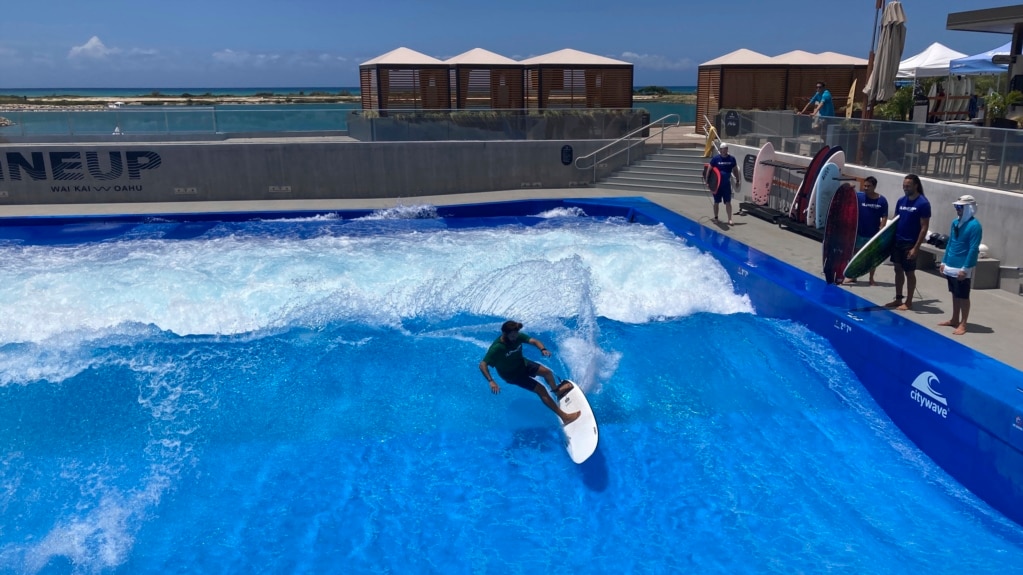Brian Keaulana is a Native Hawaiian waterman famous for his understanding of the ocean. He is skilled in the water sport of surfing and in water rescue as a lifeguard.
Keaulana wants to share his expertise and grow the sport of surfing. He is seeking to build a surfing center with a big pool that includes a wave machine. That way, surfers could always find waves to ride in those times nature does not provide.
The proposed building site is close to the coast of Oahu, near the state capital, Honolulu. The project would be big. The pool itself would hold 26-million liters of water.
A group opposed to the project is seeking legal action to stop it. It argues that the wave pool would damage coastal plants and violate ancient Hawaiian remains.
The group hopes to cancel the project’s approval by the Hawaii Community Development Authority.
A hearing of the case in a state environmental court is set for July.
Healani Sonoda-Pale is a plaintiff in a civil case seeking to stop the wave pool. She noted that it would sit about 3.2 kilometers from a long popular ocean surf place called White Plains.
The would-be developers are “profiting off a cultural practice by controlling it by making these wave pools, which are going to destroy the actual beach that is nearby,” she said.
Also, a wave pool recently opened nearby so another is unnecessary and a waste of water, opponents say.
But Keaulana is still pushing for the project, noting ocean conditions are not always perfect for learning how to surf or save lives.
He has concerns that Hawaii’s Olympic surfing hopefuls cannot train as well as competitors who train at one of several surf parks worldwide. He said a wave pool permits more time on a surfboard in an hour than most surfers get in the ocean in a week.
“You see these surfers going to these surf parks and catching wave after wave and they are honing their skills and then they go into the ocean when there’s a swell,” he said. “Boom. They’re already primed and ready.”
Keaulana said the center would create the best conditions needed to keep top surfers competitive using the latest technology. And he added it would serve as a “life-saving lab” for teaching safety skills in a controlled setting.
His business partner, Keno Knieriem, said the details of a wave can be chosen on an electronic device. He said the electromechanical system would use devices that can create up to 1,000 waves per hour. And it can create swells similar to those in the ocean up to 2.4 meters high.
Knieriem said some 80 surfers could surf on different waves, like ones for kids or very large waves, at the same time.
Knieriem said the project would use water saving measures and its own electricity source. And it would use native plants around the center.
Besides a surf pool, the 7.6-hectare site will also include areas for activities like rock climbing, beach volleyball, skateboarding, and other activities.
The proposed center is looking at a summer 2024 opening, but it is not clear how the legal action will affect the timeline.
Keaulana said he is hopeful differences can be worked out with ho'oponopono, a traditional, culture-based form of working out differences. Project opponents say they are open to such a meeting.
Keaulana said of concerns about the project, “… I felt – and we felt – that we’ve pretty much tried to do everything possible.” And he added, “I just feel to be Hawaiian is to meet up and work your differences and problems out.”
I’m Jill Robbins.

